- The Art of Growing Gladiolus Flowers
- Choosing the right location
- Planting the bulbs
- Watering and fertilizing
- Staking and supporting
- Deadheading and pruning
- Pests and diseases
- Harvesting Gladiolus flowers
- Choosing the Perfect Variety
- Factors to Consider
- Popular Gladiolus Varieties
- Preparing the Soil for Gladiolus Growth
- 1. Choose the Right Location
- 2. Test the Soil
- 3. Improve Drainage
- 4. Remove Weeds and Debris
- 5. Dig the Soil
- 6. Add Organic Matter
- 7. Incorporate Fertilizer
- 8. Consider Soil Amendments
- 9. Rake the Soil
- 10. Water the Soil
- Planting Gladiolus Corms
- Providing Proper Watering and Sunlight
- Watering:
- Sunlight:
- Nutrient Requirements for Gladiolus
- Nitrogen (N)
- Phosphorus (P)
- Potassium (K)
- Micronutrients
- Keeping Pests and Diseases at Bay
- Pests
- Diseases
- Cultural Practices to Prevent Pests and Diseases
- Supporting Gladiolus with Stakes and Ties
- Stakes
- Ties
- Other Support Options
- Caring for Supported Gladiolus Plants
- Harvesting and Storing Gladiolus Bulbs
- Harvesting Gladiolus Bulbs
- Drying Gladiolus Bulbs
- Storing Gladiolus Bulbs
- Replanting Gladiolus Bulbs
- Question-answer:
- How do I plant gladiolus bulbs?
- When is the best time to plant gladiolus bulbs?
- How do I care for gladiolus plants?
- Can I grow gladiolus in containers?
- How long do gladiolus flowers last?
- Can I grow gladiolus from seeds?
- Do gladiolus flowers attract pollinators?
- Video: Gladiolus Plant Chat | Gladiolus Plant Care
Gladiolus, also known as sword lily, is a spectacular flowering plant that is sure to add beauty and elegance to any garden. These vibrant and tall flowers are a favorite among gardeners for their stunning array of colors and their ability to attract butterflies and hummingbirds.
Planting gladiolus bulbs is a relatively easy and rewarding task. They can be planted in the spring after the danger of frost has passed or in the fall for spring blooming. The bulbs should be planted in a sunny location with well-draining soil, and they should be spaced about 6-8 inches apart.
When caring for gladiolus, it is important to keep in mind that these flowers are heavy feeders. They require regular watering, especially during dry spells, and they benefit from weekly applications of a balanced fertilizer. Additionally, gladiolus stems are tall and can become top-heavy, so staking or caging the plants may be necessary to prevent them from bending or falling over.
With proper planting and care, gladiolus can produce an abundance of show-stopping flowers that will impress any garden enthusiast. Whether you are looking to create a stunning floral display or simply want to add some color to your garden, gladiolus is an excellent choice that is sure to delight.
The Art of Growing Gladiolus Flowers
Gladiolus flowers are known for their stunning beauty and vibrant colors. Growing these flowers can be a rewarding and enjoyable experience. Here are some key tips to help you master the art of growing gladiolus flowers.
Choosing the right location
- Gladiolus flowers thrive in full sun, so it’s important to choose a location with at least six hours of direct sunlight per day.
- Make sure the soil is well-drained as gladiolus bulbs can rot in waterlogged soil. If needed, add organic matter or compost to improve soil drainage.
Planting the bulbs
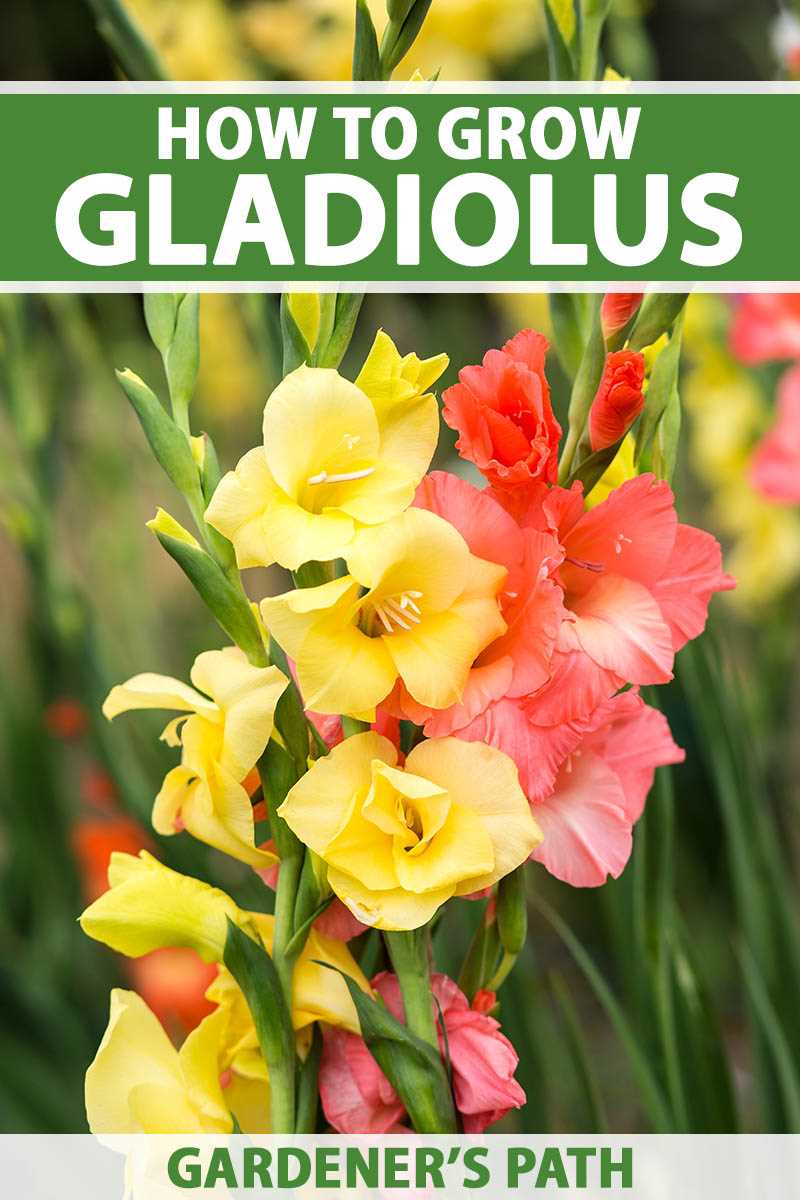
- Plant gladiolus bulbs in the spring, once the soil has warmed up. Wait until the danger of frost has passed.
- Dig a hole that is about 4-6 inches deep. Place the bulbs with the pointed end facing up, about 6 inches apart.
- Cover the bulbs with soil and gently firm it down. Water thoroughly after planting.
Watering and fertilizing
- Water gladiolus flowers regularly, keeping the soil evenly moist but not waterlogged. Aim to provide about 1 inch of water per week.
- Once the flowers start to grow, apply a balanced fertilizer every two weeks. This will help promote healthy growth and vibrant blooms.
Staking and supporting
- As gladiolus flowers grow, they can become top-heavy and fall over. To prevent this, stake and support the plants with bamboo stakes or other support structures.
- Insert the stakes into the ground near the base of the plants and gently tie the stems to the stakes using garden twine or soft ties.
Deadheading and pruning
- Remove faded or wilted flowers regularly to encourage new blooms. This process is known as deadheading and helps redirect the plant’s energy towards producing more flowers.
- In the fall, after the first frost, cut back the foliage to about 2 inches above the ground. This will prepare the plants for winter dormancy.
Pests and diseases
- Gladiolus flowers are generally resistant to pests and diseases. However, they can be susceptible to thrips and fungal diseases in humid conditions.
- Inspect the plants regularly for any signs of pests or diseases. If necessary, treat with an appropriate insecticide or fungicide.
Harvesting Gladiolus flowers
- Gladiolus flowers can be cut for floral arrangements once the first few bottom flowers on the stalk start to open.
- Use sharp, clean scissors or garden shears to cut the flowers at an angle. Place them immediately in water to keep them fresh.
By following these tips, you can master the art of growing gladiolus flowers and enjoy their stunning beauty in your garden or floral arrangements.
Choosing the Perfect Variety
Factors to Consider
When choosing the perfect variety of gladiolus for your garden, there are several factors to consider:
- Color: Gladiolus flowers come in a wide range of colors, including red, pink, yellow, orange, purple, and white. Consider the color scheme of your garden and choose a variety that will complement it.
- Height: Gladiolus plants can vary in height, with some growing as short as 2 feet and others reaching up to 6 feet. Consider the height of the surrounding plants and choose a variety that will provide a balanced aesthetic.
- Blooming Time: Different gladiolus varieties bloom at different times throughout the summer. If you want a continuous display of flowers, consider choosing a mix of early, mid, and late blooming varieties.
- Hardiness: Gladiolus is typically considered a tender bulb and may not be hardy in all climates. Check the hardiness zone for your area and choose a variety that is suitable for your region.
- Fragrance: Some gladiolus varieties have a delightful fragrance, while others are scentless. If you enjoy the smell of flowers, opt for a scented variety.
Popular Gladiolus Varieties
Here are some popular gladiolus varieties that are known for their stunning colors and impressive blooms:
| Variety | Color | Height | Blooming Time | Hardiness | Fragrance |
|---|---|---|---|---|---|
| Priscilla | Pink | 3 feet | Early summer | Hardy in zones 7-10 | No fragrance |
| Black Beauty | Purple | 4 feet | Mid-summer | Hardy in zones 6-10 | No fragrance |
| Yellow Friendship | Yellow | 5 feet | Late summer | Hardy in zones 8-10 | No fragrance |
| Green Star | Green | 3 feet | Mid-summer | Hardy in zones 7-10 | No fragrance |
These are just a few examples of the wide variety of gladiolus available. Take the time to explore different options and choose the perfect variety for your garden.
Preparing the Soil for Gladiolus Growth
Proper soil preparation is key to ensuring the successful growth and blooming of gladiolus flowers. By preparing the soil beforehand, you can create an optimal environment for the bulbs to thrive and produce stunning blooms. Here are some steps to follow when preparing the soil for gladiolus growth:
1. Choose the Right Location
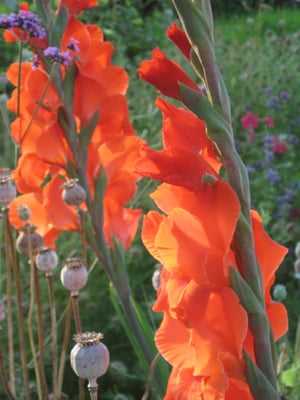
Select a sunny location for planting your gladiolus bulbs. These flowers require at least 6-8 hours of direct sunlight each day to grow and bloom properly.
2. Test the Soil
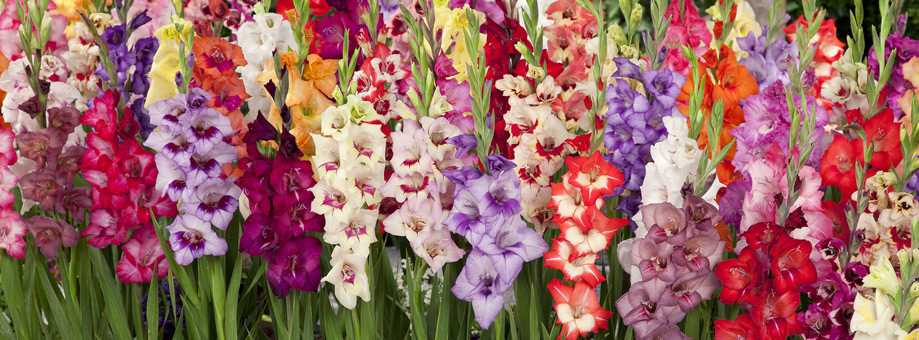
It is recommended to test the soil in your chosen location to determine its pH level. Gladiolus prefer a slightly acidic to neutral soil pH, ideally between 6.0 and 7.0. You can use a soil testing kit or send a soil sample to a local laboratory for analysis.
3. Improve Drainage
Gladiolus bulbs do not tolerate waterlogged soil, so it’s important to ensure good drainage. If the soil in your chosen location is heavy or clayey, you may need to improve its drainage by adding organic matter, such as compost or well-rotted manure. This will help loosen the soil and allow excess water to drain away.
4. Remove Weeds and Debris
Before planting your gladiolus bulbs, remove any weeds, rocks, or debris from the soil. Weeds can compete with the gladiolus for nutrients and water, so it’s important to keep the planting area clear.
5. Dig the Soil
Using a garden fork or spade, dig the soil to a depth of about 8-10 inches. Break up any clumps and remove any large stones or roots you encounter.
6. Add Organic Matter
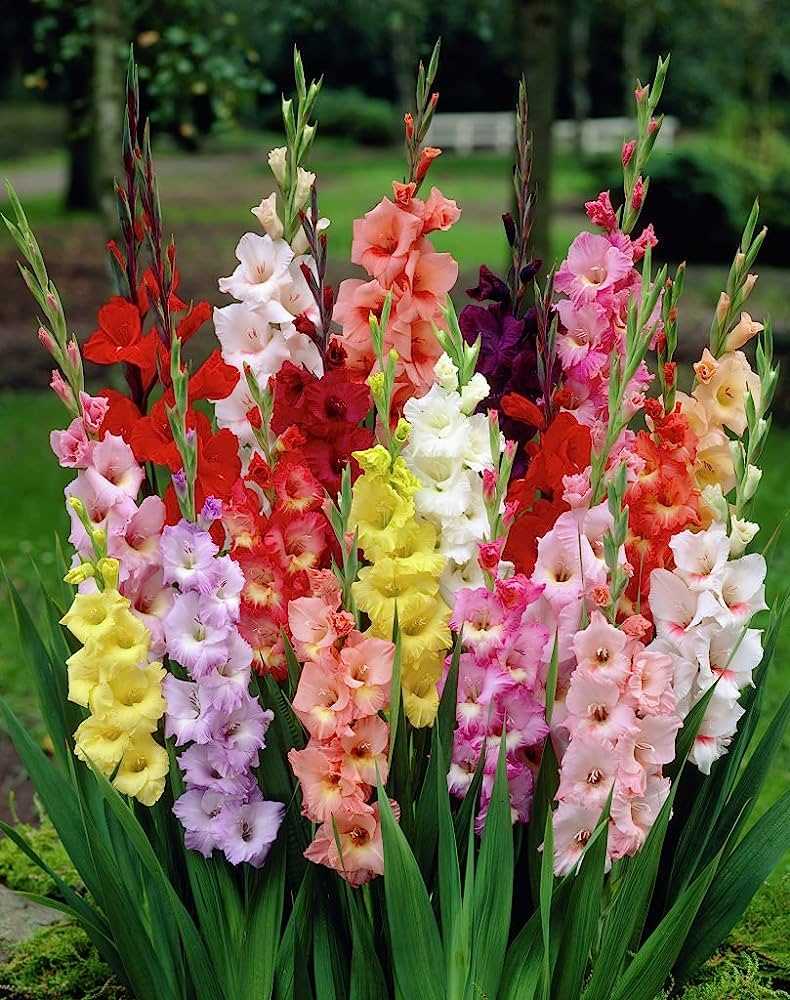
Mix in a generous amount of organic matter, such as compost or well-rotted manure, into the soil. This will help improve its structure, fertility, and water-holding capacity.
7. Incorporate Fertilizer
Before planting the gladiolus bulbs, incorporate a balanced fertilizer into the soil according to the manufacturer’s instructions. This will provide the bulbs with the necessary nutrients for healthy growth and blooming.
8. Consider Soil Amendments
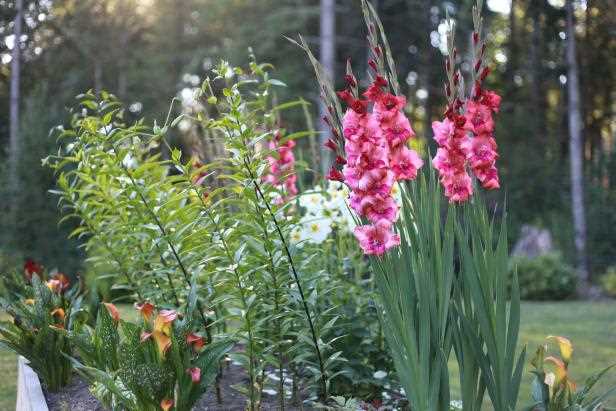
Based on the results of your soil test, you may need to make additional amendments to adjust the soil pH or nutrient levels. This could include adding lime to raise the pH or sulfur to lower it, as well as adding specific nutrients like phosphorus or potassium.
9. Rake the Soil
After incorporating the organic matter and fertilizer, use a rake to level the soil surface and create a smooth planting bed. This will make it easier to plant the gladiolus bulbs at the desired depth.
10. Water the Soil
Before planting the gladiolus bulbs, thoroughly water the prepared soil. This will help settle the soil and provide moisture for the bulbs once they are planted.
By following these steps, you can ensure that your gladiolus bulbs have the best possible start in your garden. With proper soil preparation, you can enjoy an abundance of beautiful, vibrant gladiolus blooms throughout the growing season.
Planting Gladiolus Corms
Planting gladiolus corms is a simple process that can be done in just a few easy steps. Follow these guidelines to ensure the successful growth of your gladiolus flowers:
- Choose a location: Gladiolus prefer well-drained soil and full sun. Select a spot in your garden that receives at least 6-8 hours of direct sunlight per day.
- Prepare the soil: Before planting, prepare the soil by removing any weeds or debris. Loosen the soil to a depth of about 8-10 inches.
- Planting depth: Gladiolus corms should be planted about 4-6 inches deep, with the pointed side facing up. Space the corms about 6-8 inches apart to allow for proper growth and air circulation.
- Watering: After planting, water the corms thoroughly to settle the soil and promote root growth. Continue to keep the soil evenly moist throughout the growing season, but avoid overwatering as this can lead to root rot.
- Fertilizing: To provide the gladiolus with essential nutrients, fertilize the plants with a balanced liquid or granular fertilizer once a month during the growing season. Follow the instructions on the fertilizer packaging for proper dosage.
- Support: As the gladiolus plants grow, they may require support to prevent them from falling over. Stake the plants or provide a support structure, such as a trellis or cage, to keep the flowers upright.
- Deadheading: To encourage blooming, regularly remove faded flowers by cutting the stalk just above the base of the plant. This will redirect energy towards the growth of new blooms.
- Overwintering: In areas with cold winters, gladiolus corms should be dug up and stored indoors during the winter months. After the first fall frost, carefully dig up the corms and remove any excess soil. Allow them to dry for a few days, then store them in a cool, dry location until spring.
By following these planting and care guidelines, you can enjoy the stunning beauty of gladiolus flowers in your garden for many years to come.
Providing Proper Watering and Sunlight
Proper watering and sunlight are essential for the successful growth and blooming of gladiolus flowers. Follow these guidelines to ensure your gladiolus plants receive the necessary amount of water and sunlight:
Watering:
- Gladiolus plants require regular watering to keep the soil consistently moist but not soggy.
- Water deeply, making sure that the water penetrates the soil all the way to the bulb.
- During dry periods, it is important to water the plants at least once a week.
- Avoid overwatering, as it can cause bulb rot and other fungal diseases.
- Consider using mulch around the plants to help retain moisture and prevent weeds.
Sunlight:
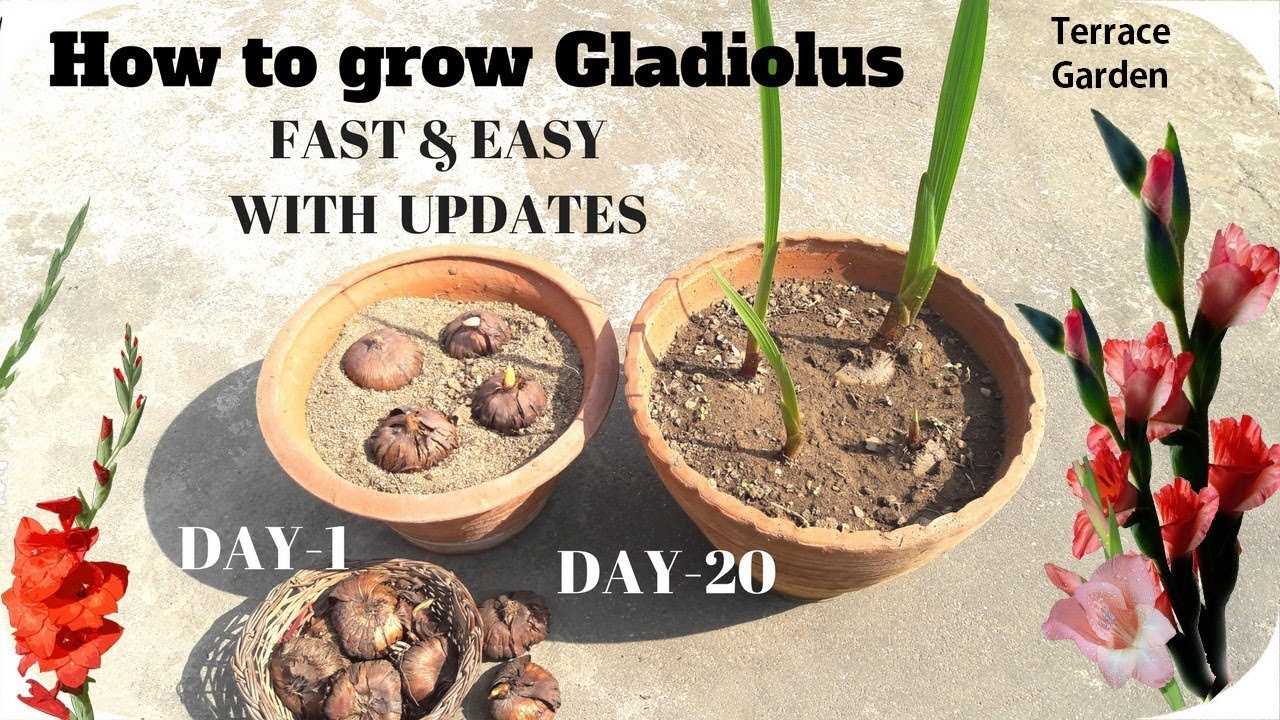
- Gladiolus plants thrive in full sunlight, so it is important to choose a location that receives at least 6-8 hours of direct sunlight per day.
- Make sure the plants are not shaded by other taller plants or structures.
- Plant the gladiolus bulbs in a sunny area with well-drained soil.
- In areas with hot climates, providing afternoon shade can help protect the plants from excessive heat.
By providing the right amount of water and sunlight, you can ensure that your gladiolus plants will grow healthy and produce stunning flowers. Remember to monitor the soil moisture and adjust your watering schedule accordingly. With proper care, your gladiolus flowers will add beauty and color to your garden or flower bed.
Nutrient Requirements for Gladiolus
Gladiolus plants require a variety of nutrients to grow properly and produce stunning flowers. Here are the key nutrients that Gladiolus plants need:
Nitrogen (N)
Nitrogen is essential for the overall growth and development of Gladiolus plants. It helps in the formation of chlorophyll, which is necessary for photosynthesis. Nitrogen also plays a crucial role in the production of proteins and enzymes.
Phosphorus (P)
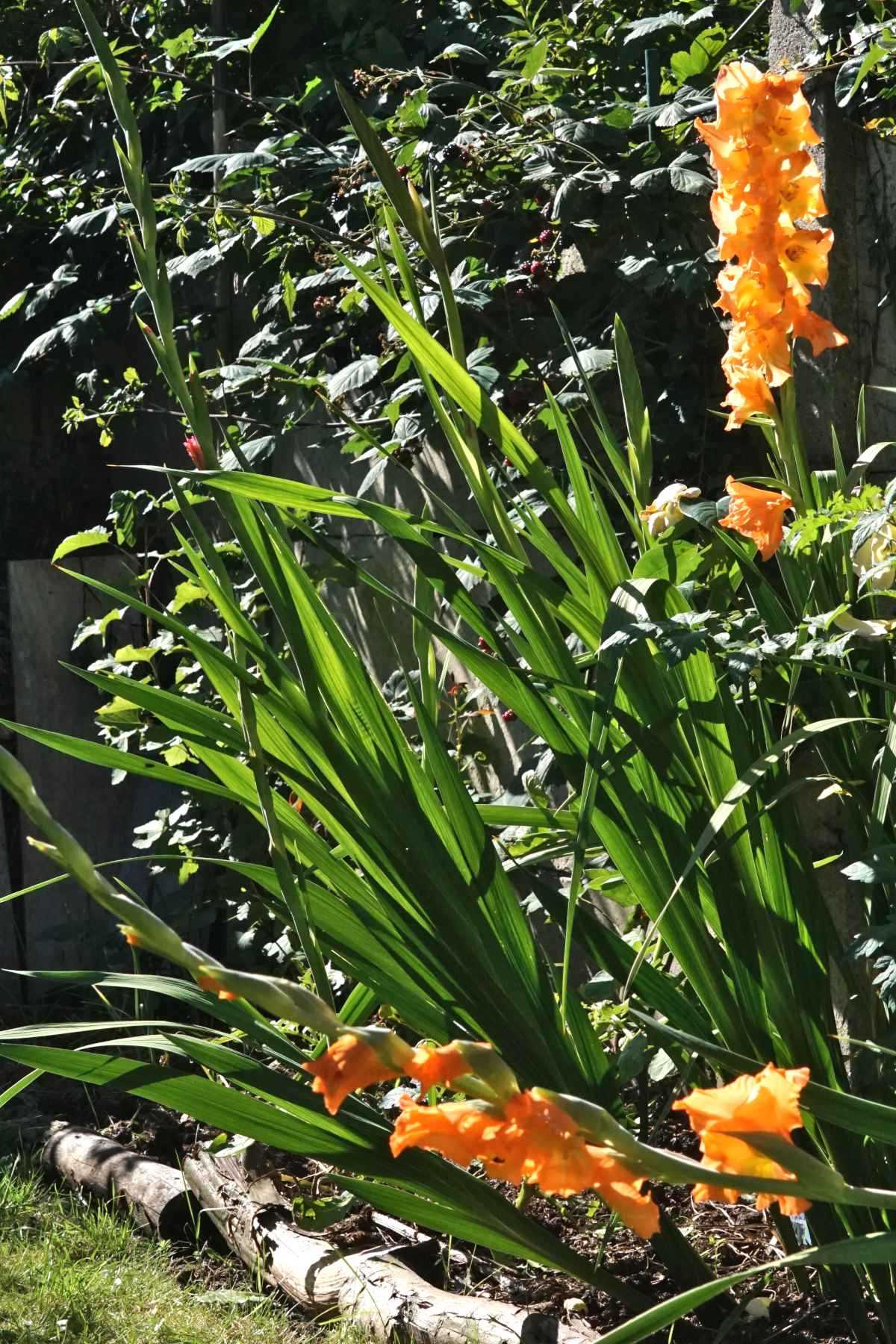
Phosphorus plays a vital role in the development of roots, flowers, and fruits in Gladiolus plants. It promotes blooming and enhances the overall health and vigor of the plant. Phosphorus also aids in energy transfer and storage.
Potassium (K)
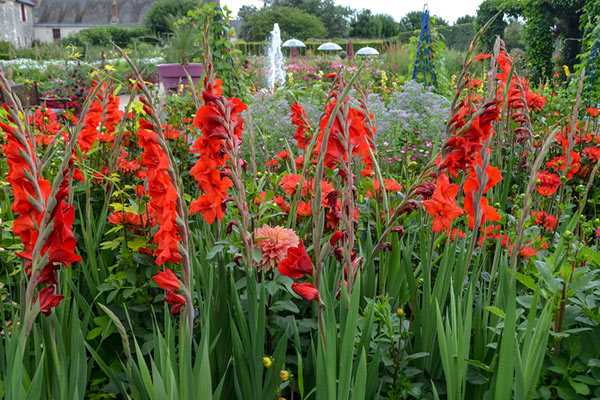
Potassium is essential for the overall growth and development of Gladiolus plants. It improves water efficiency in plants and helps in the regulation of various physiological processes. Potassium is also important for strong stems and disease resistance.
Micronutrients
In addition to the primary nutrients mentioned above, Gladiolus plants also require certain micronutrients in smaller quantities. These include iron (Fe), manganese (Mn), zinc (Zn), copper (Cu), boron (B), and molybdenum (Mo). These micronutrients are important for various metabolic processes and overall plant health.
It is important to provide Gladiolus plants with a balanced fertilizer that contains these essential nutrients. The fertilizer should be applied according to the instructions provided by the manufacturer. Regular soil testing can also help determine the nutrient levels in the soil and guide the appropriate fertilizer application.
Remember to water the Gladiolus plants properly and provide adequate sunlight for optimal growth. With the right nutrient balance, your Gladiolus plants will thrive and produce stunning flowers that will brighten up any garden or floral arrangement.
Keeping Pests and Diseases at Bay
Gladiolus plants are generally strong and resistant to pests and diseases, but there are a few common issues that can affect them. By knowing how to identify and address these problems, you can keep your gladiolus plants healthy and thriving.
Pests
While gladiolus plants are not highly susceptible to pests, there are a few insects that can cause damage. Some of the most common pests that may attack gladiolus plants include:
- Thrips: These tiny insects suck the sap from gladiolus leaves, causing them to curl and turn brown. You can control thrips by applying appropriate insecticides or by removing infested leaves.
- Aphids: Aphids are small, soft-bodied insects that gather on the undersides of leaves and stems, sucking plant juices. Regularly inspect your gladiolus plants for aphids and remove them with a strong spray of water or use an insecticidal soap.
- Spider Mites: These tiny pests can cause stippling on gladiolus leaves and may create fine webbing around the plants. Using an appropriate pesticide labeled for spider mites can help control them.
Diseases
Gladiolus plants can be affected by various diseases, but good cultural practices can help prevent and manage these issues.
- Fusarium Wilt: This fungal disease causes wilting and yellowing of gladiolus leaves. Remove and destroy infected plants to prevent the spread of this disease.
- Botrytis Blight: Also known as gray mold, this disease can affect flowers, causing them to become discolored and rot. Proper spacing and good air circulation around plants can help prevent botrytis blight.
- Root Rot: Overwatering or poorly drained soil can lead to root rot in gladiolus plants. Make sure to provide well-draining soil and avoid overwatering.
Cultural Practices to Prevent Pests and Diseases
In addition to monitoring for pests and diseases, there are some cultural practices you can follow to keep your gladiolus plants healthy:
- Plant gladiolus bulbs in well-draining soil to prevent issues like root rot.
- Space gladiolus plants properly to allow for good air circulation.
- Ensure your gladiolus plants receive adequate sunlight.
- Water the plants correctly, keeping the soil evenly moist but not waterlogged.
- Remove any dead or decaying plant material to prevent the spread of diseases.
- Regularly inspect your plants for signs of pests or diseases and take appropriate action when necessary.
By following these tips and being vigilant about pests and diseases, you can enjoy beautiful, vibrant gladiolus flowers all season long.
Supporting Gladiolus with Stakes and Ties
Gladiolus plants are known for their tall and elegant flower spikes. These spikes can grow quite tall, sometimes reaching 4 to 6 feet in height. To prevent the flower spikes from flopping over and to enhance the overall appearance of the plant, it is important to provide proper support.
Stakes
Using stakes is one of the most common methods for supporting gladiolus plants. Stakes should be inserted into the ground before planting the bulbs, so as not to disturb the roots later on. The stakes should be placed about 6-8 inches away from the planted bulb.
Stakes can be made of wood, bamboo, or metal. They should be sturdy and able to withstand strong winds. The height of the stakes should be at least as tall as the expected height of the gladiolus flower spike, if not taller.
Ties
To secure the gladiolus plant to the stake, the use of ties is essential. Soft plant ties or strips of fabric can be used to gently secure the stem of the plant to the stake. Avoid using materials that may cut into or damage the stem.
When tying the gladiolus plant to the stake, make sure to leave some slack to allow for growth and movement. Tying the plant too tightly can restrict its growth and may cause damage to the stem.
Other Support Options
In addition to stakes and ties, there are other support options that can be used for gladiolus plants. These include cages, trellises, or even leaning the plant against a fence or wall.
Cages can be placed around the gladiolus plant to provide support from all sides. Trellises can also be used by training the gladiolus stems to grow up the trellis. Leaning the plant against a fence or wall can provide support and also add a decorative element to the garden.
Caring for Supported Gladiolus Plants
Once the gladiolus plants have been properly supported, it is important to continue caring for them. Regular watering and fertilizing will help to keep the plants healthy and promote strong growth.
As the flower spikes begin to emerge, be sure to check the ties and adjust them if needed. The ties may need to be loosened or tightened as the stem grows to ensure proper support.
By providing the necessary support to gladiolus plants, you can enjoy their stunning flowers in all their glory. Whether using stakes, ties, or other support options, the effort will be well worth it when you see the beautiful blooms standing tall in your garden.
Harvesting and Storing Gladiolus Bulbs
After your gladiolus flowers have bloomed and the foliage has turned yellow or brown, it’s time to harvest and store the bulbs for the next growing season. Properly harvesting and storing gladiolus bulbs will ensure their health and vitality for future growth.
Harvesting Gladiolus Bulbs
To harvest the gladiolus bulbs, follow these steps:
- Wait until the foliage turns yellow or brown, indicating that the bulbs have finished storing energy.
- Using a garden fork or spade, carefully loosen the soil around the base of the plants.
- Gently lift the entire plant, including the corms and foliage.
- Shake off excess soil and remove any damaged or rotten corms.
Drying Gladiolus Bulbs
After harvesting, it’s important to dry the gladiolus bulbs to prevent rot and disease. Follow these guidelines:
- Trim the foliage back to about 2 inches above the corms.
- Spread the bulbs out in a single layer on a clean, dry surface.
- Place the bulbs in a well-ventilated area away from direct sunlight.
- Allow the bulbs to dry for 1 to 2 weeks, or until the corms feel firm and the outer skin is dry.
Storing Gladiolus Bulbs
Once the gladiolus bulbs are dry, it’s time to store them for the next growing season:
- Remove any remaining soil and trim off any remaining foliage.
- Place the bulbs in a mesh bag or a container with ventilation holes to allow airflow.
- Label the storage container with the variety and color of the bulbs.
- Store the bulbs in a cool, dry location with a temperature between 35 to 45°F (1 to 7°C).
- Check the bulbs periodically during storage to ensure they remain firm and free from rot or mold.
Replanting Gladiolus Bulbs
In the following spring, when the soil has warmed to a temperature of about 60°F (15°C), you can replant the gladiolus bulbs for another season of stunning flowers. Follow the planting and care instructions for optimal growth and bloom.
Question-answer:
How do I plant gladiolus bulbs?
To plant gladiolus bulbs, you should choose a sunny spot with well-drained soil. Dig a hole about 6-8 inches deep and place the bulb in the hole with the pointed end facing up. Cover the bulb with soil and water thoroughly. Space the bulbs about 6 inches apart.
When is the best time to plant gladiolus bulbs?
The best time to plant gladiolus bulbs is in the spring, after the last frost has passed and the soil has started to warm up. This is usually in late April or early May, depending on your location.
How do I care for gladiolus plants?
To care for gladiolus plants, you should water them regularly, especially during dry periods. You also need to provide support for the tall flower spikes by staking them or using cages. Deadhead the flowers as they fade to encourage more blooms. After the blooming season, allow the foliage to die back naturally before cutting it back.
Can I grow gladiolus in containers?
Yes, you can grow gladiolus in containers. Choose large containers with good drainage, and fill them with well-drained potting mix. Plant the bulbs at the appropriate depth and space them properly. Place the containers in a sunny location and water them regularly. Make sure to provide support for the flower spikes.
How long do gladiolus flowers last?
The duration of gladiolus flowers depends on the variety and growing conditions. Typically, gladiolus flowers can last for about 1-2 weeks. However, you can prolong their blooming period by regularly removing the faded flowers and providing adequate care.
Can I grow gladiolus from seeds?
Yes, you can grow gladiolus from seeds. However, it is not the most common method of propagation, as gladiolus bulbs are usually easier to grow and produce quicker results. If you choose to grow from seeds, sow them in well-drained soil in the spring, and keep the soil moist. It may take a few years for the plants to bloom.
Do gladiolus flowers attract pollinators?
Yes, gladiolus flowers are known to attract pollinators such as bees and butterflies. Their vibrant colors and nectar-rich florets are particularly attractive to these insects. Planting gladiolus in your garden can help attract and support pollinators, contributing to a healthy ecosystem.







